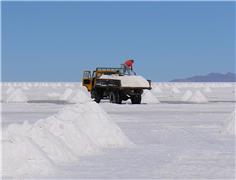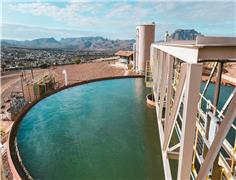- Write by:
-
Friday, June 3, 2022 - 15:39:23
-
772 Visit
-
Print

Mining News Pro - A recent study by researchers at Utah State University found that plants in Great Salt Lake wetland ecosystems are able to pull hazardous metal pollution from the lake and sometimes pass it up the food chain.
Located in northern Utah, the Great Salt Lake is the largest saltwater lake in the western hemisphere. In the areas that surround it, salt, magnesium and potash are produced, while a handful of companies are exploring the viability of extracting lithium from its briny waters.
However, by sampling three types of native plants (threesquare, hardstem, and alkali bulrush) and invasive phragmites to monitor concentrations of metals and see where in the plants they accumulated, the USU researchers found that such metals reach the Great Salt Lake predominantly by way of runoff and atmospheric pollution caused by mines and refineries.
In a paper published in the journal Ecotoxicology, the scientists explain that wetland plants absorb metals from the soil and store them belowground in their roots, bulbs, and rhizomes or aboveground in shoots, leaves, and seeds. Where in the plant these metals end up residing has implications for environmental health.
“All the plants sampled were adept at storing selenium and arsenic belowground,” lead researcher Edd Hammill said in a media statement. “However, the phragmites had the highest concentrations of lead and mercury in their seeds, and all the plants had significant concentrations of other metals in their aboveground tissues.”
According to Hammill, toxic metals in aboveground plant tissues are a cause for concern for the insects that eat them and the terrestrial food web as a whole.
“The metals are fat-soluble so every bit consumed by herbivorous insects is stored in the insect tissues and gets passed on to predatory insects like spiders, damselflies, and dragonflies. Larger predators consume the predatory insects and the toxic metals move right up the food chain in larger concentrations,” Hammill said.
The researcher and his team also found copper and cadmium levels 10 times higher in predatory insects than in wetland plants, a hazard to resident waterfowl and the large numbers of migratory birds who flock to Great Salt Lake wetlands and feed on insects before passing on to other far-off habitats.
In their view, the propensity for wetland plants to absorb hazardous metals could be useful as a way to clean up lake pollution. Thus, given the results of their study, the scientists propose leaving wetland root systems intact while cutting the aboveground foliage and burying it in low-impact locations.
Hammill pointed out that the negative impact of metals on plants and animals ties into the broader conversation about conservation of the Great Salt Lake, particularly when it comes to lake water levels which have declined to record lows.
“Keeping the Great Salt Lake watered is critical to making sure the metals stay where they are now. If the lakebed gets exposed, dust and metals become airborne, which has a considerable human impact and makes the whole problem worse,” the researcher said.
Short Link:
https://www.miningnews.ir/En/News/621442

A Russian arbitration court ruled on Monday that four units of Swiss commodities trader Glencore will pay more than 11.4 ...

Chile’s state-run miner Codelco plans to select a partner for a future lithium project in one of the country’s top salt ...

A Native American group has asked all members of a US appeals court on Monday to overturn an earlier ruling that granted ...

The London Metal Exchange (LME) on Saturday banned from its system Russian metal produced on or after April 13 to comply ...

Chile’s SQM called another investors meeting at the request of its second-largest shareholder, Tianqi Lithium Corp., ...

The world’s coal-fired power capacity grew 2% last year, its highest annual increase since 2016, driven by new builds in ...

Peabody Energy Corp. shares sunk to the lowest in seven months after the biggest US coal miner warned that first-quarter ...

Lithium supplier Vulcan Energy on Wednesday announced the start of production of the first lithium chloride at its ...

Rio Tinto said on Wednesday it is teaming up with a global venture studio and start-up investor to back the development ...
No comments have been posted yet ...